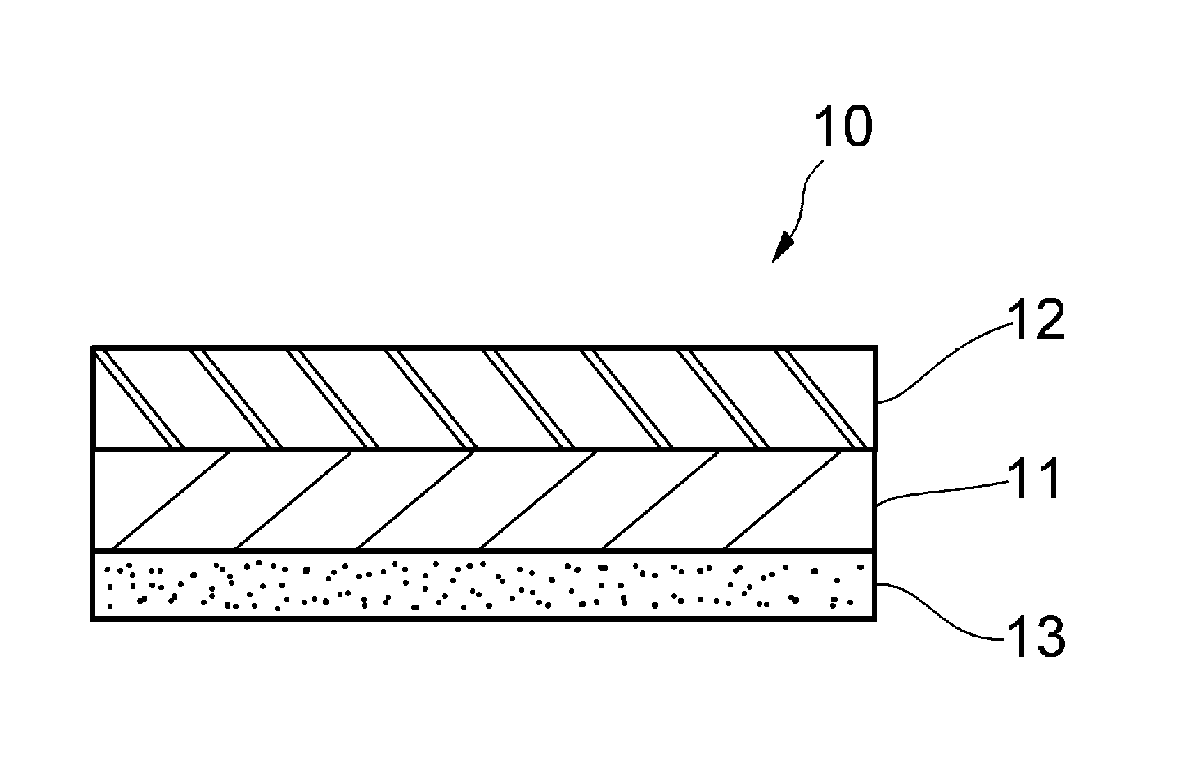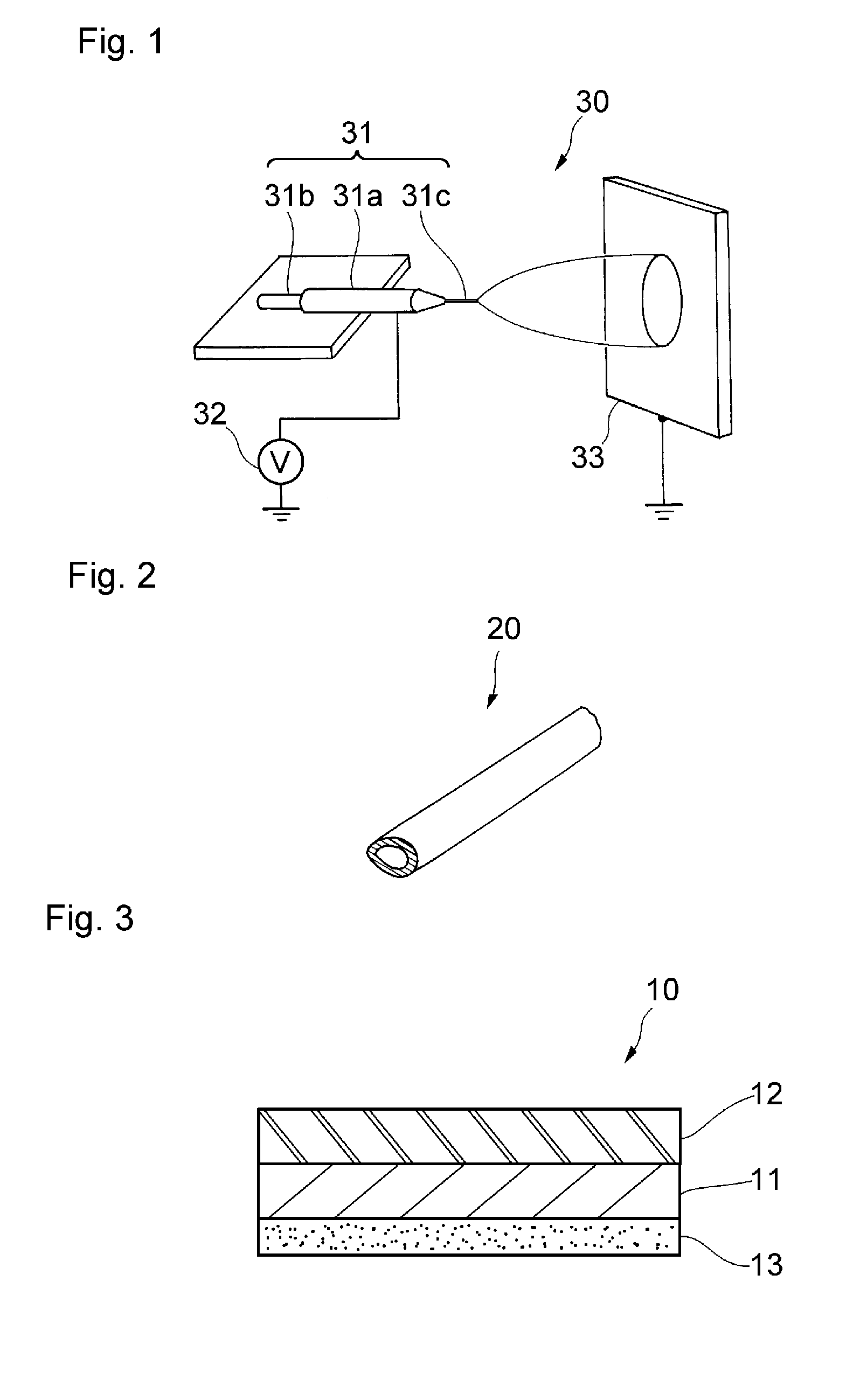Nanofiber sheet
a technology of nanofibers and nanofiber sheets, which is applied in the directions of surface pretreatment, transportation and packaging, and the application of adhesive processes with surface pretreatment, can solve the problems of low stiffness of nanofiber sheets, inability to be said to have good handling properties, and not designed to be easily transferred, so as to reduce the level difference
- Summary
- Abstract
- Description
- Claims
- Application Information
AI Technical Summary
Benefits of technology
Problems solved by technology
Method used
Image
Examples
example 1-1
[0092]Pullulan (from Hayashibara Co.) and completely saponified polyvinyl alcohol (PVA 117, from Kuraray; degree of saponification: ≧99%) were used as a water soluble polymer and a water insoluble polymer, respectively. These polymers were dissolved in water to make a stock solution for electrospinning (hereinafter “ES solution”) the composition of which is shown in Table 1 below. The solution was formed into a nanofiber using the apparatus of FIG. 1 to form a nanofiber sheet on the surface of a polyethylene terephthalate mesh (bolting cloth, Tetron #120, from Tokyo Screen) as a base sheet. The conditions of nanofiber production were as follows.
Applied voltage: 27 kV
Capillary-collector distance: 185 mm
Rate of ejection of aqueous solution: 1 ml / hr
Environment: 28° C., 36% RH
[0093]The resulting nanofiber sheet was heat treated at 200° C. for 30 minutes to crystallize and thereby water-insolubilize the completely saponified polyvinyl alcohol. The resulting nanofiber sheet had a thicknes...
examples 1-2 to 1-5
[0094]Nanofiber sheets were obtained in the same manner as in Example 1-1, except for changing the composition of the ES solution as shown in Table 1. The resulting nanofiber sheets had a thickness between 8 to 14 μm. The thickness of the nanofiber was between 100 and 500 nm.
example 1-6
[0095]A nanofiber sheet was obtained in the same manner as in Example 1-1, except for using as a water soluble polymer partially saponified polyvinyl alcohol (PVA 217, from Kuraray; degree of saponification: 86.5% to 89%). The resulting nanofiber sheet had a thickness of 13.7 μm. The thickness of the nanofiber was between 100 and 500 nm.
PUM
| Property | Measurement | Unit |
|---|---|---|
| diameter | aaaaa | aaaaa |
| thickness | aaaaa | aaaaa |
| thickness | aaaaa | aaaaa |
Abstract
Description
Claims
Application Information
 Login to View More
Login to View More - R&D
- Intellectual Property
- Life Sciences
- Materials
- Tech Scout
- Unparalleled Data Quality
- Higher Quality Content
- 60% Fewer Hallucinations
Browse by: Latest US Patents, China's latest patents, Technical Efficacy Thesaurus, Application Domain, Technology Topic, Popular Technical Reports.
© 2025 PatSnap. All rights reserved.Legal|Privacy policy|Modern Slavery Act Transparency Statement|Sitemap|About US| Contact US: help@patsnap.com


